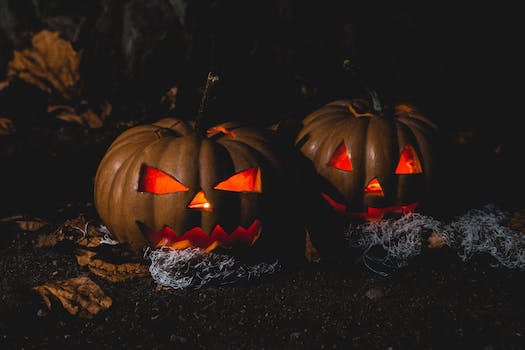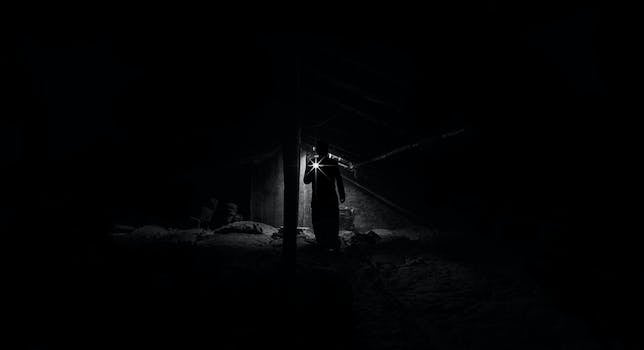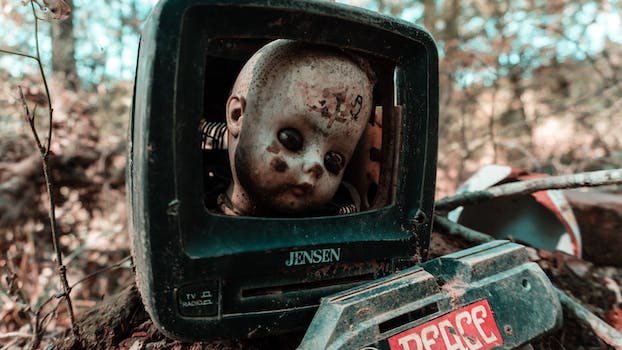The rise of J-Horror remakes has been a captivating phenomenon in recent years, as Hollywood delves deeper into the realm of Japanese horror films. Exploring the fear factor that these remakes bring to the table, this article aims to dissect the reasons behind their growing popularity and the impact they have on both the horror genre and international cinema.
- 1. Introduction
- 2. Successful J-horror Remakes
- 2.1. The Ring (Ringu)
- 2.2. The Grudge (Ju-On)
- 2.3. Dark Water
- 3. Controversial J-horror Remakes
- 3.1. One Missed Call
- 3.2. Pulse (Kairo)
- 3.3. The Eye
1. Introduction
J-Horror, which stands for Japanese Horror, has gained significant popularity in recent years. The unique blend of psychological suspense, supernatural elements, and eerie visuals has captivated audiences worldwide. One intriguing aspect of this genre is the rise of J-Horror remakes. Hollywood has taken notice of the fear factor these films possess and has begun producing their own versions. This article will explore the reasons behind the increasing trend of J-Horror remakes and analyze the impact they have on the horror film industry.
1.1. What is J-horror?
J-horror, short for Japanese horror, is a subgenre of horror films that originated in Japan and gained popularity worldwide. It is characterized by its unique blend of psychological horror, supernatural elements, and cultural references. J-horror films often explore themes of revenge, vengeful spirits, and the consequences of past actions. The genre became widely known in the late 1990s and early 2000s with the success of films like ‘Ringu’ (1998) and ‘Ju-on: The Grudge’ (2002), which were later remade in Hollywood. J-horror has since influenced numerous horror films across the globe, captivating audiences with its eerie atmosphere and chilling storytelling techniques.
1.2. The popularity of J-horror
J-horror, short for Japanese horror, has gained immense popularity in recent years. This unique genre of horror films has captivated audiences around the world with its distinctive storytelling and chilling atmosphere. From the iconic film ‘Ringu’ (1998) to the spine-tingling ‘Ju-on: The Grudge’ (2002), J-horror has left a lasting impact on the global film industry.
What sets J-horror apart from other horror genres is its ability to evoke fear through psychological suspense rather than relying solely on gore and jump scares. The emphasis on atmospheric tension, supernatural elements, and intricate plotlines creates a sense of unease that lingers long after the credits roll.
One of the reasons behind the popularity of J-horror is its ability to tap into universal fears and anxieties. The themes explored in these films often revolve around vengeful spirits, cursed objects, and haunted places, which resonate with audiences across cultures. Additionally, the use of traditional Japanese folklore and mythology adds a layer of mystery and cultural intrigue.
Furthermore, the success of J-horror remakes in Hollywood has contributed to its rise in popularity. Films like ‘The Ring’ (2002) and ‘The Grudge’ (2004) introduced Western audiences to the world of J-horror, sparking a wave of interest in the genre. These remakes not only highlighted the originality and creativity of J-horror but also paved the way for future collaborations between Japanese and Western filmmakers.
In this article, we will delve deeper into the rise of J-horror remakes and explore the fear factor that makes this genre so compelling. Join us as we unravel the mysteries and examine the cultural impact of J-horror on the global stage.
1.3. The trend of remaking J-horror films
J-horror, short for Japanese horror, has gained significant popularity in recent years. With its unique blend of psychological terror, supernatural elements, and cultural nuances, J-horror films have captivated audiences around the world. However, a growing trend in the film industry has been the remaking of these Japanese horror classics for Western audiences. This article will delve into the rise of J-horror remakes and explore the fear factor behind this phenomenon.
2. Successful J-horror Remakes
The success of J-horror remakes has become a prominent trend in the film industry, as Western audiences have developed a strong fascination with Japanese horror. These remakes aim to capture the essence of the original Japanese films while catering to the cultural preferences of a wider audience. Here are some notable examples of successful J-horror remakes:
1. The Ring (2002): Directed by Gore Verbinski, this remake of the 1998 Japanese film ‘Ringu’ introduced Western audiences to the terrifying curse of a haunted videotape. The American version became a box office hit and spawned a successful franchise.
2. The Grudge (2004): Based on the Japanese film ‘Ju-On: The Grudge,’ this remake directed by Takashi Shimizu brought the eerie story of a vengeful ghost to Western screens. The film’s chilling atmosphere and suspenseful moments captivated audiences and led to several sequels.
3. Dark Water (2005): Directed by Walter Salles, this remake of the 2002 Japanese film explored the haunting tale of a ghostly presence in a rundown apartment building. The atmospheric storytelling and strong performances contributed to its success.
These successful J-horror remakes demonstrate the enduring appeal of Japanese horror and the ability to adapt and reimagine these stories for different cultures and audiences.
2.1. The Ring (Ringu)
The Ring (Ringu) is a prime example of a successful J-horror remake. Originally released in Japan in 1998, Ringu became a cultural phenomenon and set the stage for the popularity of J-horror films. The American remake, simply titled The Ring, was released in 2002 and received widespread acclaim. Directed by Gore Verbinski, the film stars Naomi Watts as a journalist investigating a cursed videotape that causes anyone who watches it to die within seven days. The Ring cleverly combines elements of psychological horror and supernatural suspense, creating a chilling and suspenseful atmosphere. The film’s eerie visuals, atmospheric soundtrack, and strong performances contribute to its success as a J-horror remake that effectively captures the fear factor of the original. The Ring not only introduced Western audiences to the world of J-horror but also paved the way for future successful remakes in the genre.
2.2. The Grudge (Ju-On)
The Grudge (Ju-On) is one of the most successful J-horror remakes to date. Directed by Takashi Shimizu, the film was released in 2004 and quickly gained popularity in both Japan and the United States. The story revolves around a curse that is born when someone dies in the grip of extreme rage or sorrow. This curse manifests as a vengeful spirit that haunts and kills anyone who enters the house where the death occurred. The film’s eerie atmosphere, chilling scares, and clever storytelling have made it a favorite among horror enthusiasts. With its success, The Grudge sparked a wave of American remakes of J-horror films, solidifying its place in the history of successful J-horror remakes.
2.3. Dark Water
Dark Water is a prime example of a successful J-horror remake. Originally a Japanese film released in 2002, it was remade in Hollywood in 2005. The remake stayed true to the eerie atmosphere and psychological terror of the original, while also incorporating Western elements to appeal to a broader audience.
The story revolves around a single mother, Dahlia, who moves into a rundown apartment with her young daughter. As they settle in, strange occurrences begin to happen, such as dark water dripping from the ceiling and a mysterious girl lurking in the building.
The film effectively builds tension and suspense through its atmospheric cinematography and haunting score. The use of water as a symbol of the supernatural adds to the overall sense of unease and dread. The audience is kept on edge as they witness Dahlia’s descent into madness while trying to uncover the secrets of the building.
Dark Water showcases the successful adaptation of J-horror elements into a Western context. It demonstrates that a well-executed remake can retain the essence of the original while appealing to a different cultural audience. With its atmospheric storytelling and chilling visuals, Dark Water stands as a testament to the enduring popularity of J-horror remakes.
3. Controversial J-horror Remakes
Controversial J-horror Remakes:
The rise of J-horror remakes has sparked both excitement and controversy in the film industry. These remakes, which are adaptations of popular Japanese horror films, have gained significant attention and popularity in recent years. However, they have also faced criticism for various reasons. Some argue that these remakes fail to capture the essence and cultural context of the original films, resulting in a diluted and less impactful version. Others believe that the remakes are simply cashing in on the success of the original films, without bringing anything new or innovative to the table. Regardless of the differing opinions, there is no denying the impact that J-horror remakes have had on the genre, introducing a whole new generation of viewers to the world of Japanese horror.
3.1. One Missed Call
One Missed Call is a notable entry in the genre of controversial J-horror remakes. This 2008 film, directed by Eric Valette, is a remake of the 2003 Japanese film of the same name. The story revolves around a group of friends who start receiving mysterious voicemails from their own future selves, foretelling the exact time and date of their deaths. As the friends try to unravel the mystery behind these chilling calls, they find themselves facing a malevolent supernatural force that seeks to claim their lives.
One Missed Call faced mixed reviews from both critics and horror enthusiasts. While some appreciated the film’s eerie atmosphere and suspenseful moments, others criticized it for lacking the originality and subtlety of its Japanese counterpart. Despite the polarizing opinions, the film managed to generate enough interest among audiences and became a moderate box-office success.
Controversial remakes like One Missed Call highlight the ongoing debate surrounding the adaptation of J-horror films for Western audiences. Some argue that these remakes bring fresh perspectives and introduce new cultural elements, making them more accessible to a wider audience. Others, however, believe that these remakes often dilute the essence of the original films, losing the unique blend of psychological horror and cultural context that made J-horror so distinctive.
Whether loved or loathed, One Missed Call serves as an intriguing example of the ongoing fascination with J-horror remakes and the impact they have on the genre’s evolution.
3.2. Pulse (Kairo)
Pulse (Kairo) is a notable entry in the controversial J-horror remakes. Originally released in 2001, this Japanese supernatural horror film was directed by Kiyoshi Kurosawa. The story revolves around the theme of technology and its impact on human connection and loneliness. The film explores the concept of a mysterious website that allows users to experience the presence of ghosts and ultimately leads to their demise.
The American remake of Pulse was released in 2006, directed by Jim Sonzero. Although the remake received mixed reviews, it still managed to capture the eerie atmosphere and the underlying sense of dread present in the original. It delves into the fear of isolation in the digital age, highlighting the dangers of over-reliance on technology.
Pulse (Kairo) stands as an example of a J-horror remake that successfully conveys the chilling elements of the original while adding its own unique take on the fear factor. It is a thought-provoking film that raises questions about the consequences of our increasingly interconnected world.
3.3. The Eye
Controversial J-horror remakes have been a topic of much discussion and debate in recent years. While some critics argue that these remakes fail to capture the essence and cultural nuances of the original Japanese horror films, others believe that they offer a fresh take on the genre and introduce it to a wider audience. One of the most controversial J-horror remakes is the American version of ‘The Eye.’ Directed by the Pang brothers, the remake stars Jessica Alba as a woman who receives an eye transplant and starts seeing horrifying supernatural visions. While the original Hong Kong film was hailed for its atmospheric tension and psychological horror, the American remake received mixed reviews, with many viewers feeling that it lacked the subtlety and depth of the original. Despite the controversy surrounding J-horror remakes, they continue to be popular among both horror enthusiasts and mainstream audiences, highlighting the enduring fascination with Japanese horror and the fear it evokes.
Conclusion
In conclusion, the rise of J-Horror remakes is a testament to the enduring popularity and universal appeal of Japanese horror films. By exploring the fear factor in these remakes, filmmakers are able to tap into a global audience’s fascination with the unknown and the supernatural. As audiences continue to seek out thrilling and chilling experiences, it is likely that J-Horror remakes will continue to dominate the horror genre.




